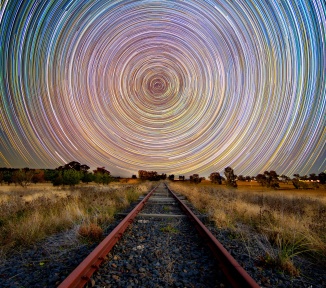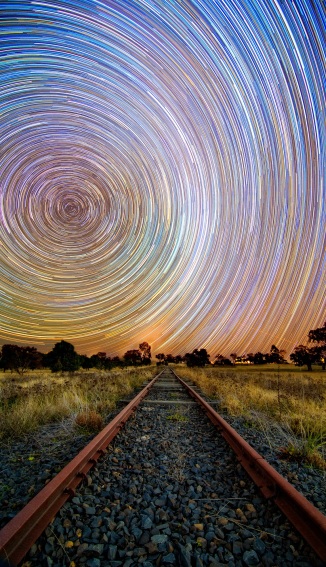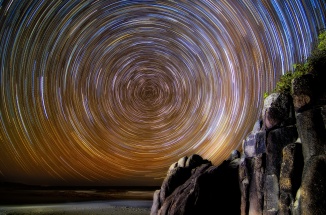
Cosmic Poo Cannon – (c) Gerard Blacklock
D7000 coupled with Tokina 11-16mm f2.8 @ 11mm- Aperture: f/3.3 and Shutter Speed: 60.7 seconds (151 shots)
ISO: 400
stand back, we have a new means for waste water treatment
The cosmic poo cannon, during daylight hours can be seen here https://blog.avernus.com.au/prelude/
Given the time of month and the lack of moonage, i was keen to get out and do some star trails, without having to drive a million miles to a dark place. After the failed attempt from the previous week with Rodney, I was itching even more so. I had planned to get out during the week but the fickle weather prevented it.
I have had a few potential sites in the back of my mind for while, Sydney park, Kurnell (multiple poo cannons there), malabar and North Bondi (super poo cannon), after looking at a few older shots of the super poo cannon (https://blog.avernus.com.au/prelude/) it really looked as if it had lots of potential, with the only unknown being (beside never actually having visited there) being the amount of ambient light that may spill from the adjacent apartments and streets.
After a wonderful sunrise at Coogee (Ross jones pool) with Rodney and half of Sydneys other photographers ;( I mentioned it could be on the cards if the weather was on – the rest is history.
So here we have – Cosmic poo cannon
Taken in Australias largest city with probably some of the most light pollution around – just goes to show, you can do star trails pretty well anywhere 🙂
Techie stuff
151 images stacked together using the statistics method in Adobe PS CC
The foreground shot was just a simply red LED torch applied to the path leading up to the poo cannon.
Opted for longer shutter to reduce the file numbers (read as running outta disk space)
D7000 coupled with Tokina 11-16mm f2.8 @ 11mm- Aperture: f/3.3 and Shutter Speed: 60.7 seconds (151 shots)
ISO: 400
out front – North Bondi Water Treatment plant Exhaust stack.
Lovely jubbly and thanks for looking – I welcome any suggestions, comments and improvements to my photography, they are always warmly welcomed and always appreciate the time people take to have a look and/or comment.




